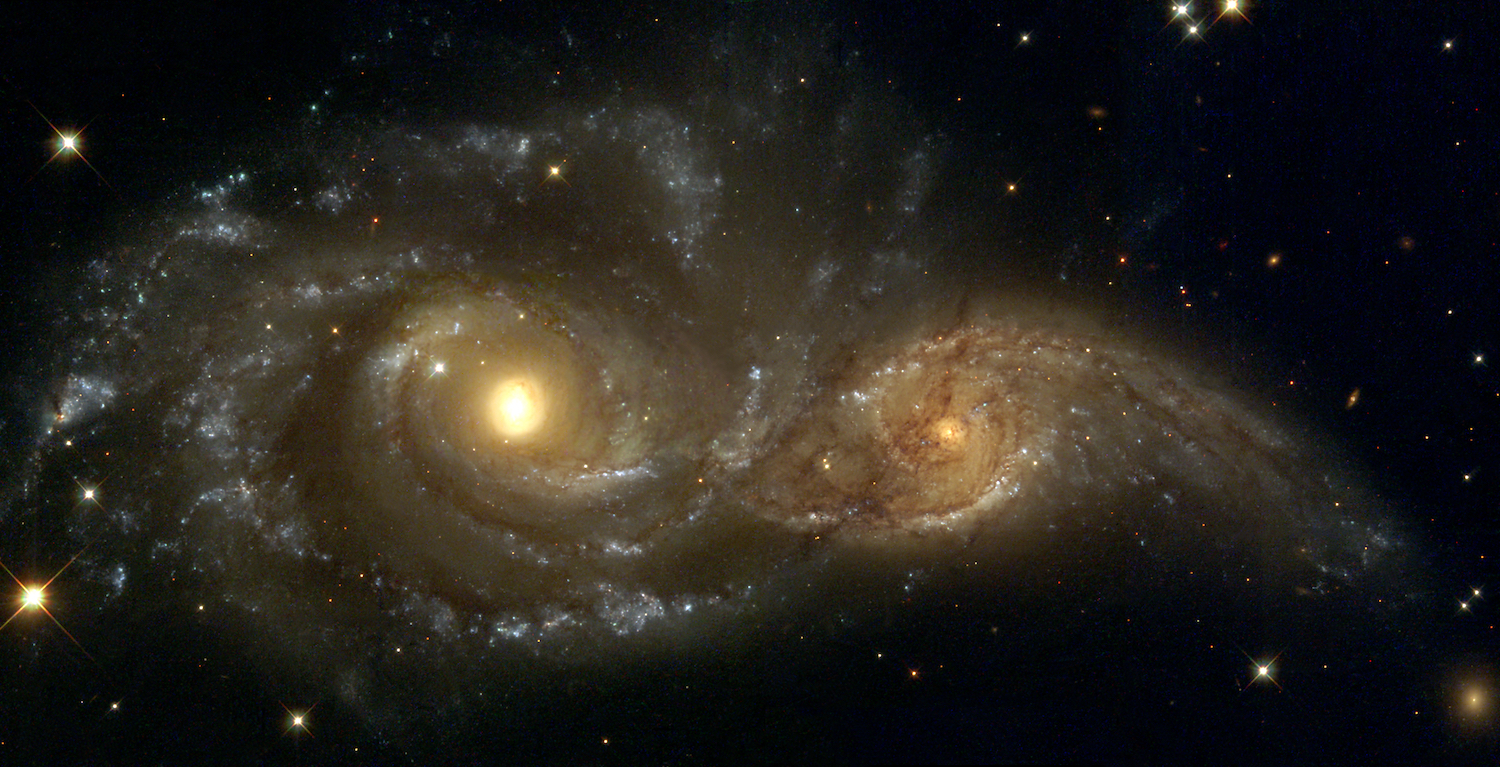You may wonder why we have devoted this final section to gravity in a chapter that focuses on the nature of science. There are several reasons:
- As we’ll discuss, gravity provides a great example of the distinction between a fact and a theory in science, pointing out that a theory can be extremely strong even when not proven beyond all doubt.
- The discussion of gravity provides a natural conclusion to our earlier discussion of the Copernican revolution, because Newton demonstrated that gravity answers the “why” of the laws of planetary motion that were discovered by Kepler. That is, Kepler discovered laws that can predict exactly how planets move in their orbits, and Newton used gravity to explain why those laws hold.
- For the NGSS, this section meets several key goals for middle school, as listed in the separate NGSS correlation (grade8science.com/ngss).

We have all heard of gravity, and you started this chapter with an activity about it. In doing that activity, you probably realized that gravity does a great many things, including:
- Gravity holds us to the ground and gives us weight.
- Gravity makes objects fall when dropped.
- Gravity makes Earth and other planets round.
- Gravity keeps satellites, the International Space Station, and the Moon in orbit of Earth.
- Gravity keeps Earth and other planets in orbit around the Sun.
- Gravity holds galaxies together.
- Gravity explains why stars are hot enough inside for them to have the nuclear fusion that makes them shine.
But what exactly is gravity, and how does it explain so many different things? We’ll discuss this question in this section, and in the process we’ll see how gravity provides a great example of how what we consider a “fact” relates to what we call a “theory” in science.
Section Learning Goals
By the end of this section, you should be able to answer the following questions:
- What is gravity?
- How does gravity hold us to the ground and make objects fall?
- Why does gravity make planets round?
- How does gravity govern motion in the universe?
Before you continue, take a few minutes to discuss the above Learning Goal questions in small groups or as a class. For example, you might discuss what (if anything) you already know about the answers to these questions; what you think you’ll need to learn in order to be able to answer the questions; and whether there are any aspects of the questions, or other related questions, that you are particularly interested in.
Journal Entry
Gravity in Action
Spend a few minutes thinking about Figure 3.17, then in your journal write a few sentences about how you think gravity is important to what you see in the photograph.
There are many possible connections that students might cite between gravity and Figure 3.17, including:
- Gravity attracts the two galaxies to each other.
- Gravity holds each individual galaxy together.
- Gravity determines how the stars in each galaxy orbit the center of their galaxy.
- Gravity holds each star in each galaxy together, and explains why the stars are round and the orbits of any planets the stars may have.
- Gravity governs the motions of gas in the galaxy, and therefore is crucial to understanding the spiral structure we see.
- Gravity plays a key role in explaining why these galaxies are disk-like in shape.
Most students will think of only a few of the above ideas, so if you grade these entries, just look for thoughtful writing.
Group Discussion
The Fact and Theory of Gravity
Before you read on, consider the title of this section: “The Fact and Theory of Gravity.” In small groups or as a class, discuss and write down brief answers to the following questions:
- In what way(s) do you think gravity counts as a “fact”?
- In what ways does it count as a “theory”?
- How do you think these two ideas (fact and theory) are related?
This discussion can be kept very brief, since the answers will all be discussed in Section 3.4.1. The point is simply to have students think about these ideas before the answers are revealed to them. Either each group or you at the front of class should write down brief answers so that you can compare them to what students learn as they continue on.